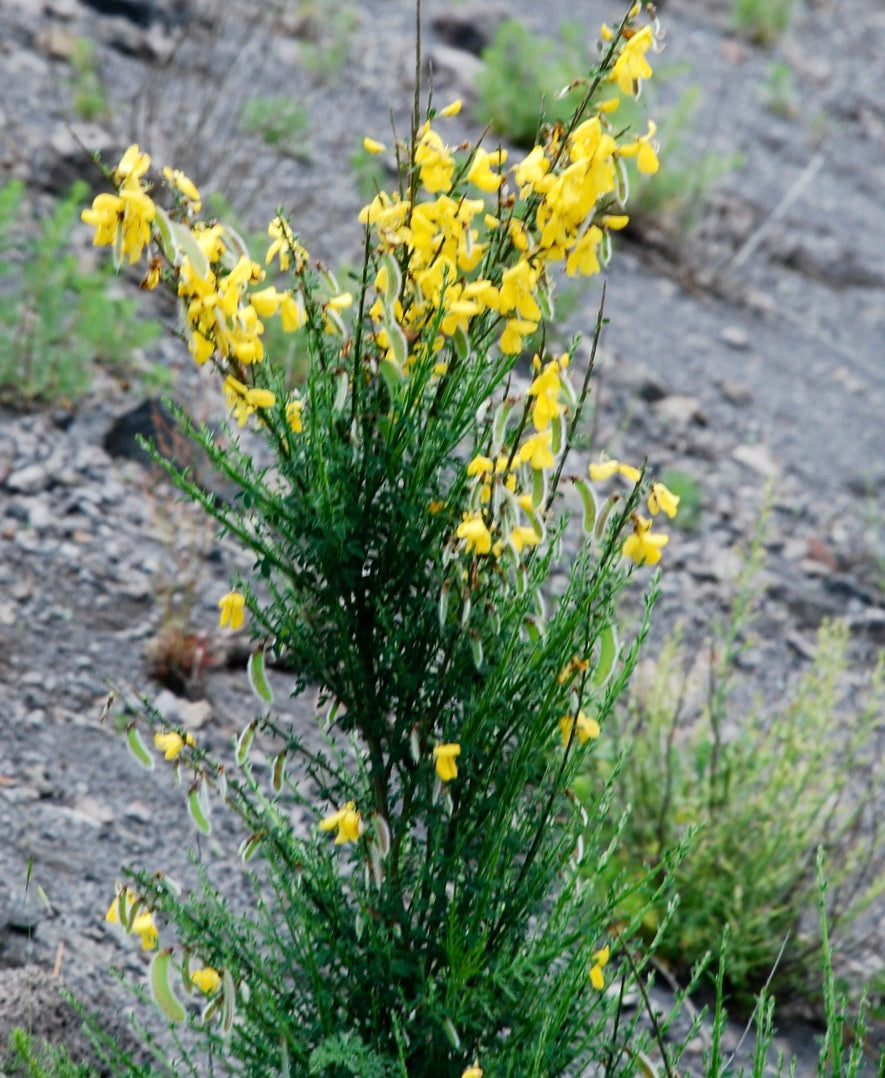- Catalogue Plants
Cytisus scoparius var. vesuvianum (from VESUVIO Vulcano) 50-80cm
Cytisus scoparius var. vesuvianum (from VESUVIO Vulcano) 50-80cm
Couldn't load pickup availability
Plant Description
Cytisus scoparius var. vesuvianum is the very rare variety of Cytisus scoparius from the VESUVIO Vulcano in Naples, ITALY.
Cytisus scoparius, commonly known as Scotch Broom or Common Broom, is a deciduous shrub native to Europe. This shrub is known for its striking appearance, featuring vibrant yellow, pea-like flowers that bloom profusely in late spring to early summer. Scotch Broom is a hardy and fast-growing plant that has become naturalized in many regions worldwide. It is often used in landscaping and can be found along roadsides, in open fields, and in various garden settings.
Cultivation Tips:
-
Climate: Scotch Broom is well-suited to temperate climates. It can thrive in USDA Hardiness Zones 5 to 8, where it can withstand cold winters and warm summers.
-
Sunlight: Plant Scotch Broom in a location that receives full sun. It requires plenty of direct sunlight to produce an abundance of flowers.
-
Soil: This shrub prefers well-draining soil with a slightly acidic to neutral pH. It can adapt to a range of soil types, including sandy or loamy soils.
-
Watering: Once established, Scotch Broom is drought-tolerant and does not require frequent watering. Water sparingly, allowing the soil to dry out between waterings.
-
Mulching: Apply a layer of mulch around the base of the plant to conserve soil moisture, suppress weeds, and regulate soil temperature. Keep the mulch away from the plant's stem to prevent rot.
-
Pruning: Prune Scotch Broom after flowering to maintain its shape and remove spent flowers. Be cautious with pruning, as cutting back too much can reduce flowering in the following year.
-
Fertilization: In most cases, this shrub does not require heavy fertilization. If the soil is nutrient-poor, you can apply a balanced, slow-release fertilizer in the spring.
-
Pest and Disease: Scotch Broom is generally resistant to pests and diseases. However, it can be susceptible to aphids and occasionally spider mites. Monitor for infestations and treat them as needed.
-
Propagation: You can propagate Scotch Broom from seeds or by taking semi-hardwood cuttings in late summer. Seeds require scarification and stratification for successful germination.
-
Landscape Use: Scotch Broom is commonly used in landscaping for its vibrant flowers and ability to provide a burst of color. It can be used as a specimen plant, in mixed borders, or to stabilize soil on slopes. It is important to be aware that it can be invasive in some regions, so check with local authorities regarding its cultivation.
Scotch Broom is a showy and hardy shrub that can add a splash of color to your garden or landscape, particularly in late spring and early summer. By following these cultivation tips and providing the right growing conditions, you can enjoy the beauty of Cytisus scoparius in your outdoor space. However, exercise caution when planting it, as it can be invasive in some areas and may require management to prevent it from spreading uncontrollably.
Disclaimer: Please keep on mind that the plant may have grown since pictured. Also be aware that most plants change across seasons. If present foliage could have been fallen or change in its color.
Botanical family: Fabaceae
Botanical genus: Cytisus
Botanical species: Cytisus scoparius var. vesuvianum
SKU:BA-0903-S
Cultivation
Cultivation
Additional information
Additional information
Plant Height: 50-80cm
Plant Diameter:
Picture Taken on:
Pot Size:
Grafted/Not Grafted:


